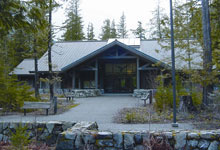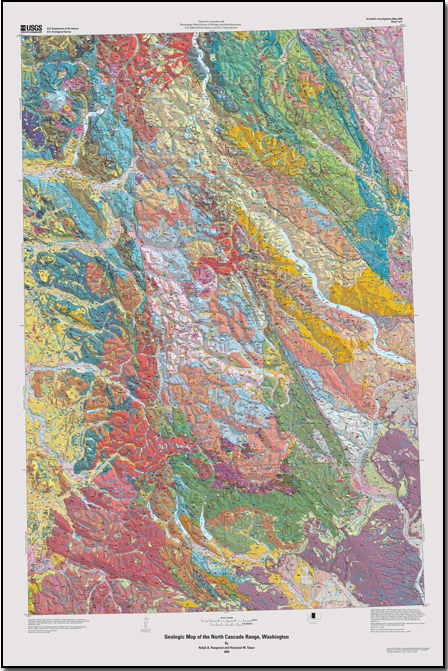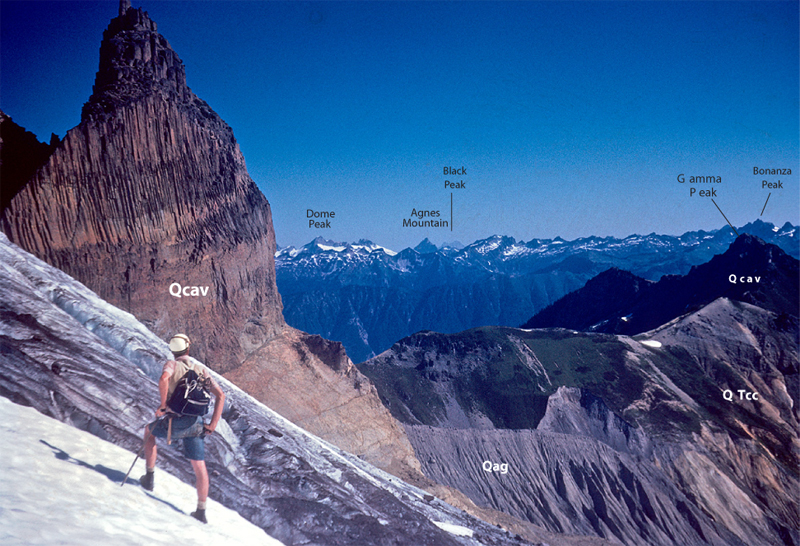Okay, I'm going to try a new method of communication, the blog. Not that I haven't blogged before, but this is new for conveying the power and majesty of the North Cascades. I've been sending family and friends email "trip reports" of my travels since the inception of email. The trip reports started as a technical guide for me/climbing friends, along the lines of Fred Beckey or Harvey Manning, but with special footnotes about "stay in the creek-bed until through avalanche chutes filled with slide alder and devil's club". Over the decades, they've become less technical, and more lyrical, catching some of the effort and route, but more often the emotions generated by experiencing true wilderness. And as the many photos attest (see photo galleries at northcascades.org, or here at the americanalps page), the North Cascades are true Wilderness, especially where the US Congress has designated it so!
;-)
So, what of Granite Creek trench and this blog stuff? Well, over the years I've suffered falls, dodged avalanches, watched boulders zip by me on steep glaciers at 70mph (special shout out to NCGCP, 2005) and had bears wandering through camp, among various adventures. But by far the most scared I've ever been in the hills is when ol' sparky shows up. Yep, lightning has induced fear in me more than most anything. And it just happens that Granite Creek, and even more-so, the Methow Mountains, seem to be a magnet for T-storms. They usually crop up over the Methow (on the E) , and then drift down Granite Creek ( to the NW). On a solstice trip in the summer of 2005, I was camped close to Wing Lake. The weather was simply magnificent, and the forecast indicated more of same. On day two, as I ascended Black Peak, I could see high clouds streaming in from the SW (standard pattern for weather, but usually for rain and "expected" weather). No hint of convection al all, just high clouds. I kept a wary eye on the descent, and when one is at nearly 9k feet, one can see a long way out to sea, even from this NE location in the range. Still no convection.
Back at high camp, the weather was fair to clear far to the E, but darkening to the W. I should note the view S and W once down on the Wing Lake bench is limited by the hulk of Black Peak, and the high (crest) ridge linking to Corteo Peak. In short, I couldn't see what was coming, only that there was thankfully no convection over the usual lightning generators (the Methow Mountains closely E of me).
Was that the rumble of thunder I heard?? Couldn't be, the clouds were still high, and the Methow was "clear".
Within in an hour, Black Peak was engulfed in clouds, the temp dropped 25 degrees F, and there was cloud to cloud lightning roaring near and far! I wasn't too concerned, as the bench isn't nearly as exposed at the camp at Ragged Ridge, and it was all cloud to cloud lightning (up in the sky well above the peaks). Then a cell moved directly over the summit of Black, and descended thousands of feet in seconds! Suddenly boiling clouds were BELOW me. Now "cloud -to -cloud" offered little comfort since I was in clouds, with lighting rods (peaks, crags, trees, tent) all around. in a calculated move, I stayed OUT of the tent and huddled in my rain gear, taking in the show. I was NOT going to be shrink-wrapped in a tent on this fine summer day!
It was an incredible experience, and one I am thankful for. Of the many times I've been in electrical storms, this was perhaps the least fearful I've been because I was relatively safe, and experienced it with eyes wide open.
see all of this at
http://picasaweb.google.com/tphammond/BlackPeakSolstice2005#
(sorry to not get more storm shots, I was a bit, um, busy and with an old 35mm camera, didn't want to lose all of my film.)
Two hours later, as the sun went down, the storms went down.
I love the North Cascades.





























